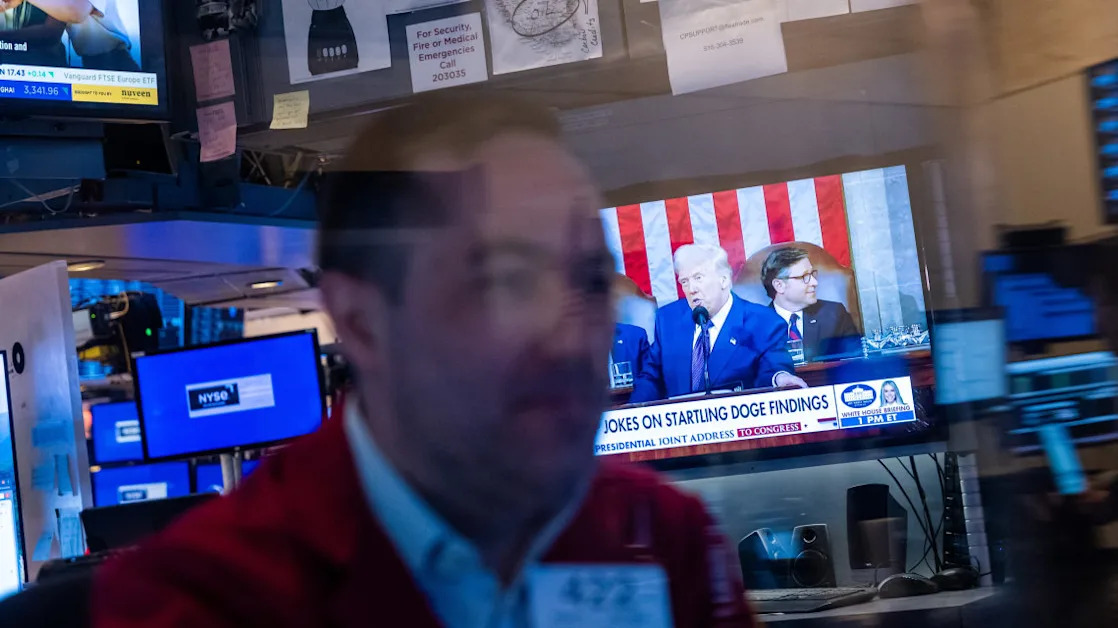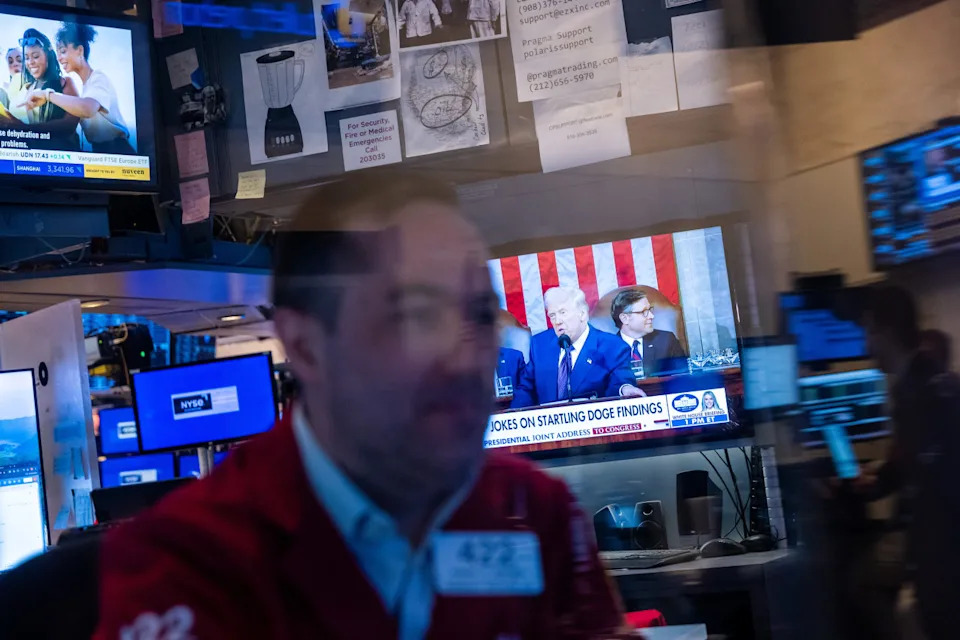
Stocks Haven’t Traded at These Levels Since September

The prospect of a second term for President Trump boosted stock prices well before he was elected. Two months into his presidency, that “Trump bump” has all but disappeared.
The stock sectors that began to rally six months ago—fueled by the hope that a second Trump term could spur growth for the U.S. economy—have come falling back to earth as trade-policy whiplash and recession fears rattle markets.
Most Read from The Wall Street Journal
Financial, industrial and small-cap stocks have erased much of the gains they logged since September, before polls showed Trump taking a narrow lead in the final weeks of the presidential race. Other trades closely linked to a Trump victory, such as bitcoin and Tesla, have slid sharply from their postelection highs.
Major stock indexes have moved in tandem. All three major stock indexes have given up their gains over the past six months. The S&P 500 entered correction territory last week—falling more than 10% from its Feb. 19 high, the quickest such slide since the start of the Covid-19 market crash. The Nasdaq Composite suffered a similar fate earlier this month.
“The market was overly optimistic about what a change in policy would mean, particularly for industrial and cyclical stocks,” said James Davolos, a portfolio manager at Horizon Kinetics. “This administration, top to bottom, is different than the first Trump administration.”
Wall Street had high hopes for the second Trump term, which many anticipated would be friendly to big business. Instead, the president has prioritized aggressive tariff policies that economists and business leaders warn will lift costs. Trump and his cabinet leaders have also tweaked, delayed or rolled back the policy multiple times, creating uncertainty about which companies and products might be most affected.
That has spooked investors, who pushed stocks even lower when the president signaled he was willing to stay the course despite the pain in the markets.
In coming days, investors are waiting for an update from the Federal Reserve, which will unveil its latest interest-rate decision Wednesday. The central bank is expected to hold rates steady, but investors will watch for signals on how Fed leaders will respond to tariffs and other economic concerns.